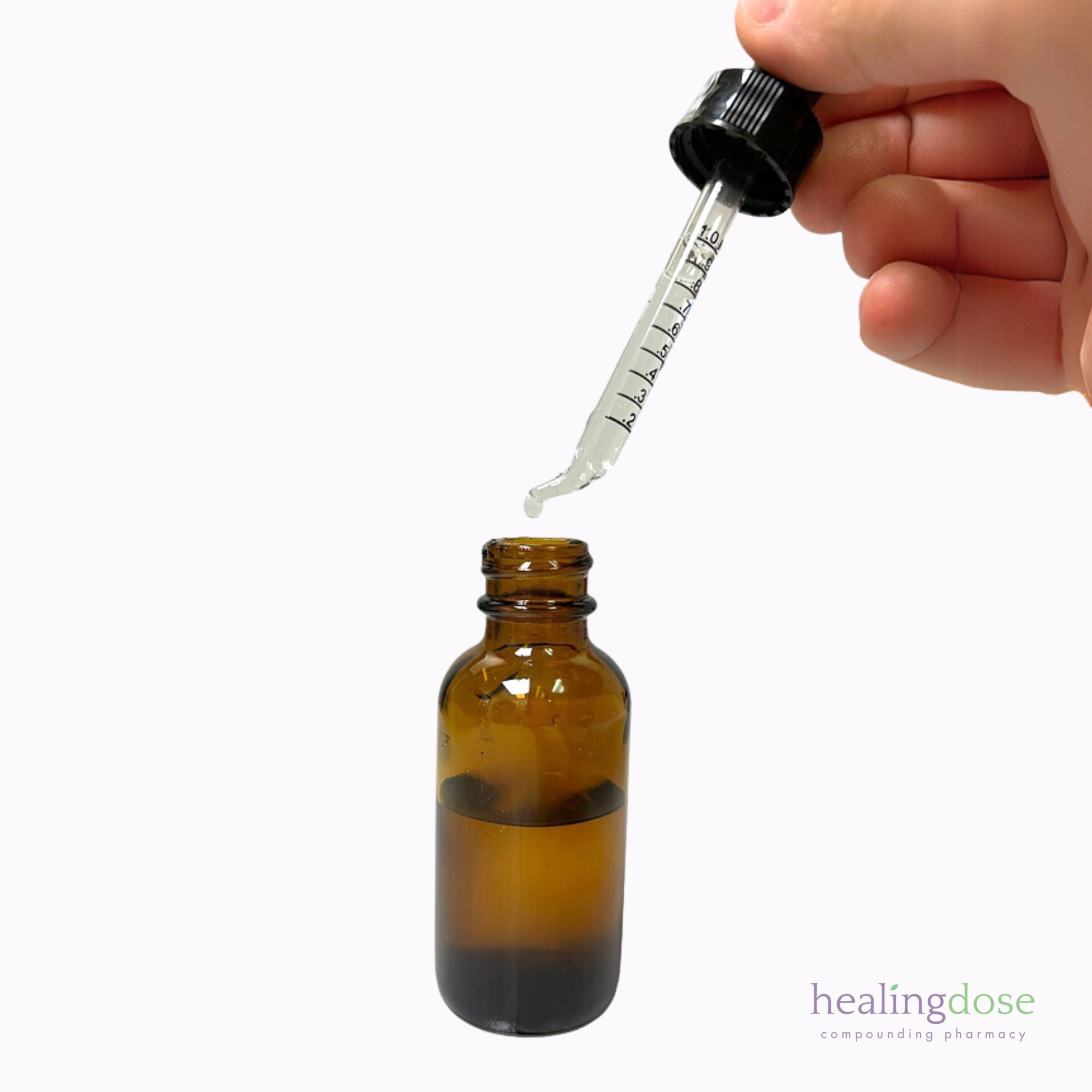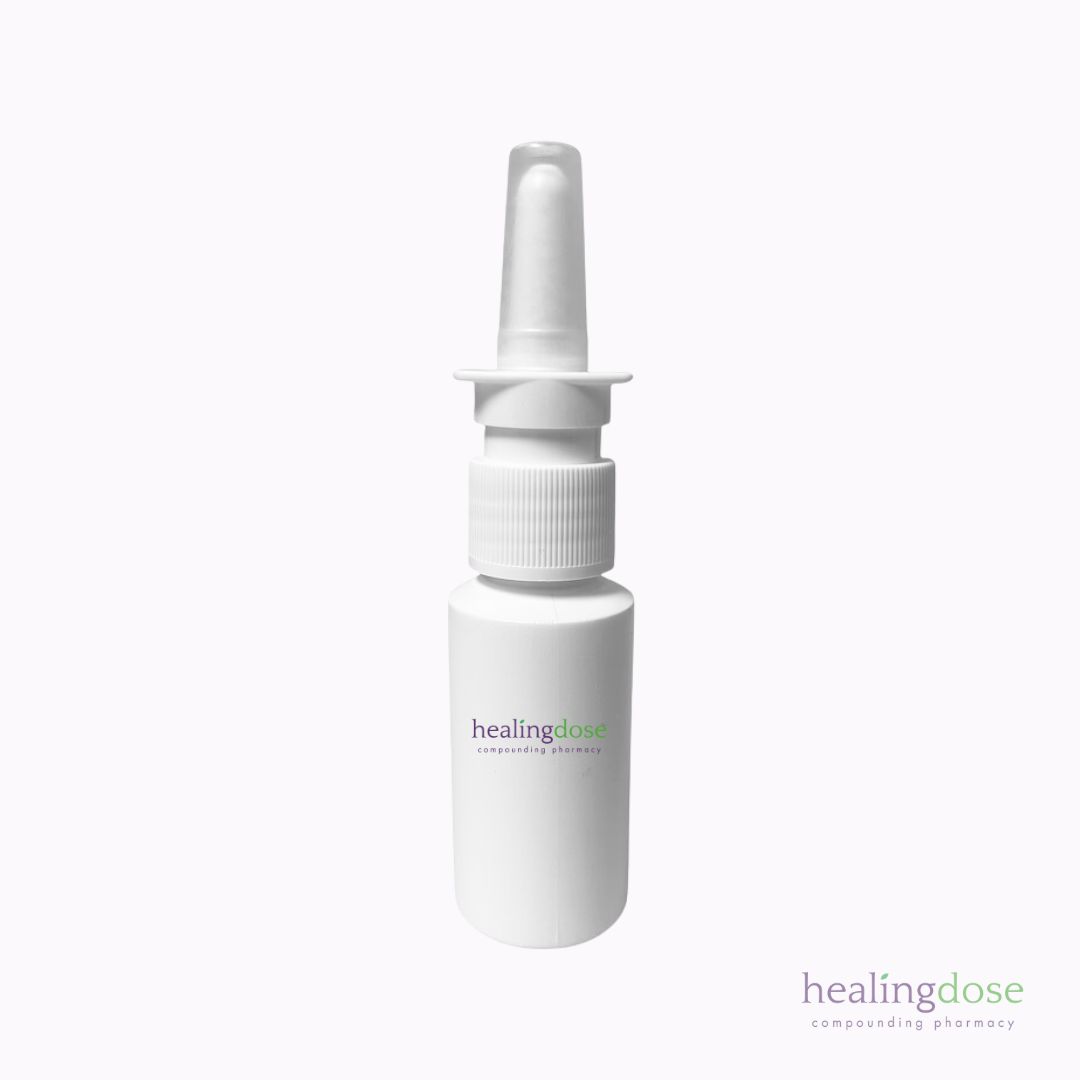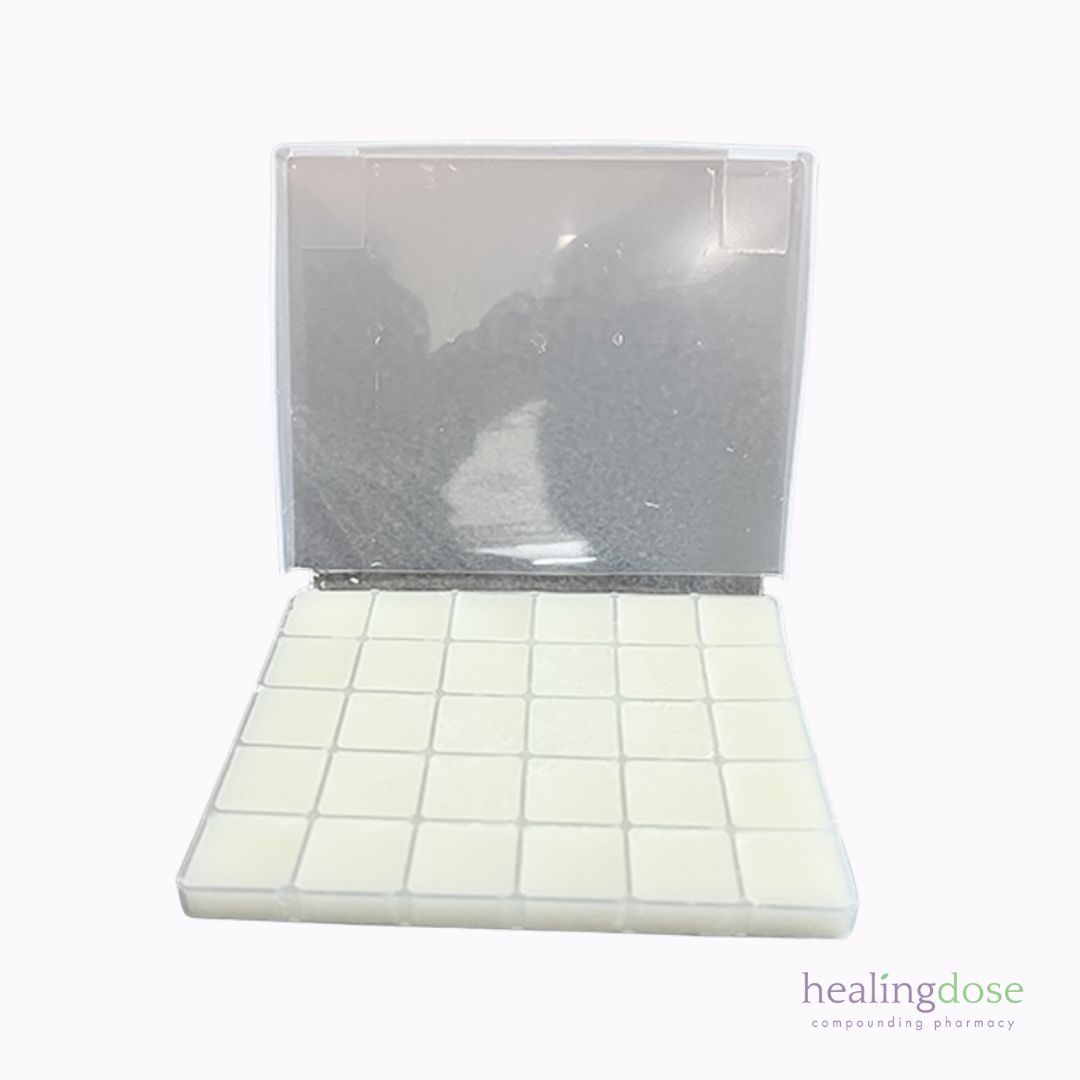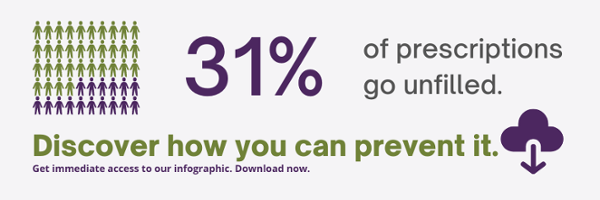Compounded Oxytocin: From Postpartum Care to Emotional Health and Sexual Function
Oxytocin, sometimes called the “bonding hormone,” is more than just a labor-inducing agent. This naturally occurring hormone influences not only childbirth and lactation, but also emotional bonding, sexual arousal, and stress response.
At Healing Dose Compounding Pharmacy (HDRx), we offer custom compounded oxytocin in nasal sprays and sublingual forms — formulated to meet specific patient needs. For providers and patients exploring personalized support in postpartum care, mood stability, or intimacy, compounded oxytocin may be worth considering.
What Is Oxytocin?
Oxytocin is a neuropeptide hormone made by the hypothalamus and secreted by the pituitary gland. Naturally, it is released during:
- Labor and childbirth
- Breastfeeding
- Physical affection and intimacy
- Positive emotional bonding

Beyond its role in reproductive health, oxytocin is increasingly studied for its influence on emotional regulation, social connection, and even anxiety. These expanded applications are gaining traction in integrative and functional medicine.
How Oxytocin Works in the Body: A Closer Look at Its Mechanism of Action
Receptor Binding and Distribution
Oxytocin exerts its effects by binding to oxytocin receptors (OXTR) — a type of G-protein-coupled receptor (GPCR) — which are widely distributed in both peripheral tissues and the central nervous system (CNS). These receptors are found in:
- Uterine smooth muscle
- Mammary glands
- Brain regions such as the amygdala, nucleus accumbens, hypothalamus, and prefrontal cortex
- Heart and vascular tissues
Testes, prostate, and other parts of the male reproductive tract
Intracellular Signaling Cascade
When oxytocin binds to its receptor, it activates the phospholipase C (PLC) pathway, leading to:
- Increased inositol triphosphate (IP3)
- Release of intracellular calcium from the endoplasmic reticulum
- Activation of protein kinase C (PKC)
This intracellular cascade causes muscle contraction in tissues like the uterus (during labor) and the myoepithelial cells of the breast (for milk ejection), but also influences neurotransmitter release and neuronal activity in the brain.
Central Nervous System Effects
In the brain, oxytocin acts as a neuromodulator, influencing behavior, emotion, and cognition. Key effects may include:
- Social bonding and trust
- Pair bonding between partners
- Parental behavior and caregiving
- Stress regulation by modulating the hypothalamic-pituitary-adrenal (HPA) axis
- Emotional reactivity in areas like the amygdala
- Reward and motivation, especially through interactions with dopamine pathways
These effects are context-dependent — meaning oxytocin does not universally “increase” trust or bonding, but may enhance emotional salience and social cues, depending on environment, mood, and relational history.
Peripheral Physiologic Effects
Outside the brain, oxytocin influences various tissues:
- Uterus: Stimulates smooth muscle contractions during labor
- Breast: Promotes milk let-down via contraction of myoepithelial cells
- Heart & Vasculature: May support vasodilation and cardioprotection
- Male Reproductive Tract: Present in the testes and prostate; may influence ejaculation and sperm transport (under investigation)
- Bladder and GI tract: May contribute to smooth muscle tone
Half-Life and Delivery Routes
Endogenous oxytocin has a short plasma half-life (~3–5 minutes) and is quickly broken down by oxytocinase and peptidases. However, compounded forms (e.g., nasal spray) may bypass first-pass metabolism and offer central nervous system exposure, especially via the olfactory and trigeminal pathways when administered intranasally.
Because of its short half-life and peptide nature, oxytocin is typically not effective orally, which is why compounding pharmacies like HDRx offer sublingual and nasal spray formulations designed to improve bioavailability.
When May Compounded Oxytocin Be Beneficial?
Below are patient-centered scenarios where providers may recommend compounded oxytocin as part of a care plan.
Postpartum Recovery & Bonding
Patient: Samantha, 32, three weeks postpartum
Challenges: Difficulty with milk let-down, increased anxiety, and emotional disconnection from her baby
Approach: Samantha’s provider recommends a compounded intranasal oxytocin spray to use shortly before breastfeeding sessions.
Why It May Help: Intranasal oxytocin may support the milk ejection reflex and could encourage calming and bonding sensations during nursing. Some patients report an increased sense of emotional presence with their newborn when used under guidance.
Sexual Dysfunction in Perimenopause
Patient: Elena, 47, experiencing decreased libido and intimacy issues during perimenopause
Challenges: Vaginal dryness, painful intercourse, emotional detachment from her partner
Approach: Elena’s provider incorporates a compounded oxytocin sublingual medication into her personalized hormone care plan, used before intimacy.
Why It May Help: Oxytocin may support improved sexual response, arousal, and emotional connection by influencing pleasure and reward pathways in the brain.
Emotional Flatness & Social Withdrawal
Patient: Michelle, 41, recovering from trauma and experiencing emotional numbness
Challenges: Reduced emotional engagement, strained family relationships
Approach: Under a functional medicine plan, Michelle begins a low-dose oxytocin nasal spray, paired with talk therapy and mindfulness techniques.
Why It May Help: Oxytocin may positively influence emotional openness and social bonding when used with supportive therapy. Some patients report improved communication and emotional responsiveness over time.
Why Compound Oxytocin?
While oxytocin is available commercially in injectable form (commonly used during labor and postpartum hemorrhage), compounded versions offer flexibility in formulation and dosing.
However, oxytocin is temperature-sensitive. Some pharmacies mistakenly produce dosage forms that must be heated, such as troches and suppositories. These dosages require heat and are not suitable for oxytocin due to degradation at the required formulation temperatures.
For example, storing it at 30°C can lead to a 14% loss of potency in one year, while storage at 40°C can result in a 50% potency loss after a year. Storing oxytocin at 2–8°C is crucial to maintain its stability and effectiveness. Even short excursions to higher temperatures can lead to cumulative degradation, especially with repeated exposure.
Suitable dosage forms are nasal and sublingual — neither formulation requiring heat.
Final Thoughts: Providing Options in Modern Care
| Form | Advantages |
|---|---|
| Nasal Spray | Fast absorption; may support mood and intimacy benefits |
| Sublingual | Easy to use; patient-friendly flavors; dissolves under the tongue |

Compounded formulations are not mass-produced but prepared per prescription to meet individual patient needs. HDRx follows rigorous safety and quality standards under PCAB accreditation.
Emotional Health & Oxytocin: Emerging Research
Oxytocin’s role in emotional and mental well-being continues to be explored, particularly in areas such as:
- Postpartum depression and anxiety
- Social phobia and stress
- Autism spectrum-related social impairment
- Emotional connection in relationships
- Support for trauma or PTSD
While oxytocin is not a treatment or cure, its use in combination with behavioral or emotional health support may offer potential benefit in enhancing feelings of safety, connection, and calm.
HDRx Compounded Oxytocin Availability
Healing Dose Compounding Pharmacy is licensed to ship prescription medications to Michigan, Ohio, Illinois, Indiana, Wisconsin, Minnesota, and Florida.
OTC products available for nationwide shipping
Providers may request:
- Oxytocin Nasal Sprays (custom dose ranges)
- Sublingual (flavored, single or combination)
- Combination options with estriol, progesterone, or DHEA when needed
HDRx Prescription Order Forms make it easy to prescribe Oxytocin.
Healing Dose Compounding Pharmacy is licensed to ship prescription medications to Michigan, Ohio, Illinois, Indiana, Wisconsin, Minnesota, and Florida.
OTC products available for nationwide shipping
Providers may request:
- Oxytocin Nasal Sprays (custom dose ranges)
- Sublingual (flavored, single or combination)
- Combination options with estriol, progesterone, or DHEA when needed
Why Choose Healing Dose for Compounded Oxytocin?
- PCAB-Accredited: Your assurance of safety and compounding excellence
- Provider-Centric: Fast turnaround and responsive support
- Customized Care: Multiple delivery formats, doses, and flavors
- Quality & Compliance: Sterile and non-sterile compounding under strict protocols
- Multi-State Service: Licensed in MI, FL, IL, IN, OH, WI, MN
As the population ages, the number of individuals navigating the emotional, hormonal, and sexual health challenges of perimenopause and menopause continues to grow — especially in Michigan and across the Midwest.
For many, traditional one-size-fits-all therapies fall short. Compounded oxytocin offers a personalized, evidence-informed approach that may support emotional connection, sexual function, and overall quality of life during this pivotal life stage.
At Healing Dose Compounding Pharmacy, we work closely with providers and patients to create customized oxytocin formulations tailored to individual needs. As demand for integrative, patient-centered care increases, compounded oxytocin represents a promising option for those seeking thoughtful solutions rooted in both science and compassion.



Getting Started
If you’re a provider exploring integrative therapies for postpartum support, intimacy, or emotional well-being, or a patient interested in personalized hormonal care — Healing Dose Compounding Pharmacy is here to support you.
Contact us for a consultation or request an order form today.
References
- Einspanier, H., Ivell, R., Balvers, M., Rust, W., & Bathgate, A. (1998). Oxytocin and male reproductive function. In H. S. M. Amico & S. J. Crowley (Eds.), Advances in Experimental Medicine and Biology (Vol. 424, pp. 253–264). Springer. Link
- Flanagan, J., Chatzittofis, A., Boström, E., Hallberg, J., Öberg, K., Arver, S., & Jokinen, J. (2022). High plasma oxytocin levels in men with hypersexual disorder. The Journal of Clinical Endocrinology & Metabolism, 107(5), e1816–e1822. Link
- Iovino, M., Messana, T., Tortora, A., Giusti, C., Lisco, G., Giagulli, V. A., & De Pergola, G. (2021). Oxytocin signaling pathway: From cell biology to clinical implications. Endocrine, Metabolic & Immune Disorders – Drug Targets, 21(1), 91–110. Link
- McKay, E. C., & Counts, S. E. (2020). Oxytocin receptor signaling in vascular function and stroke. Frontiers in Neuroscience, 14, 574499. Link
- Melis, M. R., & Argiolas, A. (2021). Oxytocin, erectile function and sexual behavior: Last discoveries and possible advances. International Journal of Molecular Sciences, 22(19), 10376. Link
- Olff, M., Frijling, J. L., Kubzansky, L. D., Bradley, B., Ellenbogen, M. A., Cardoso, C., Bartz, J. A., Yee, J. R., & van Zuiden, M. (2013). The role of oxytocin in social bonding, stress regulation and mental health: An update on the moderating effects of context and interindividual differences. Psychoneuroendocrinology, 38(9), 1883–1894. Link
- Sartorius, A. M., Rokicki, J., Birkeland, S., Bettella, F., Barth, C., de Lange, A.-M. G., Quintana, D. S., et al. (2024). An evolutionary timeline of the oxytocin signaling pathway. Communications Biology. Link
- Uvnäs-Moberg, K., Handlin, L., & Petersson, M. (2015). Self-soothing behaviors with particular reference to oxytocin release induced by non-noxious sensory stimulation. Frontiers in Psychology, 5, 1529. Link





